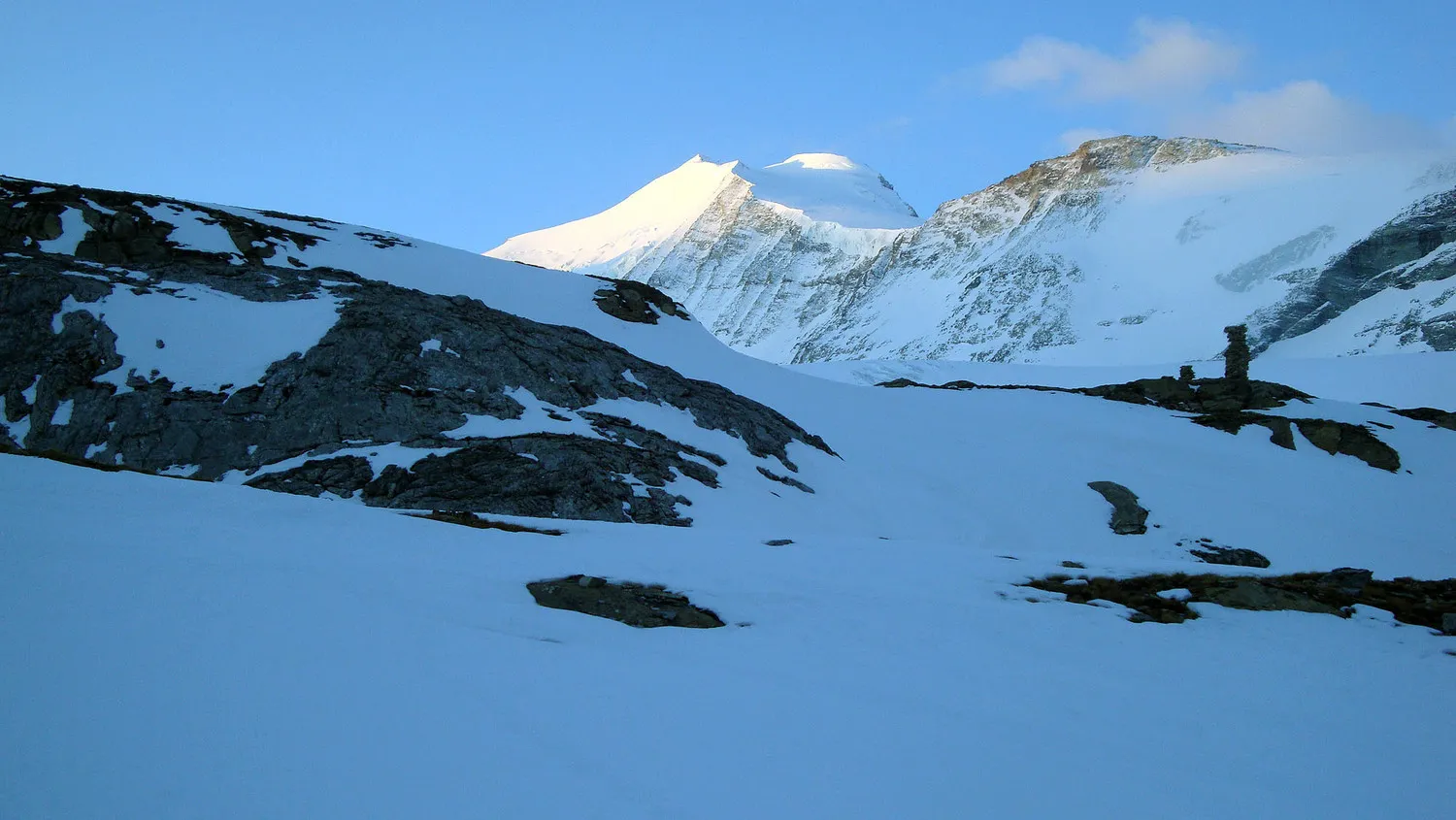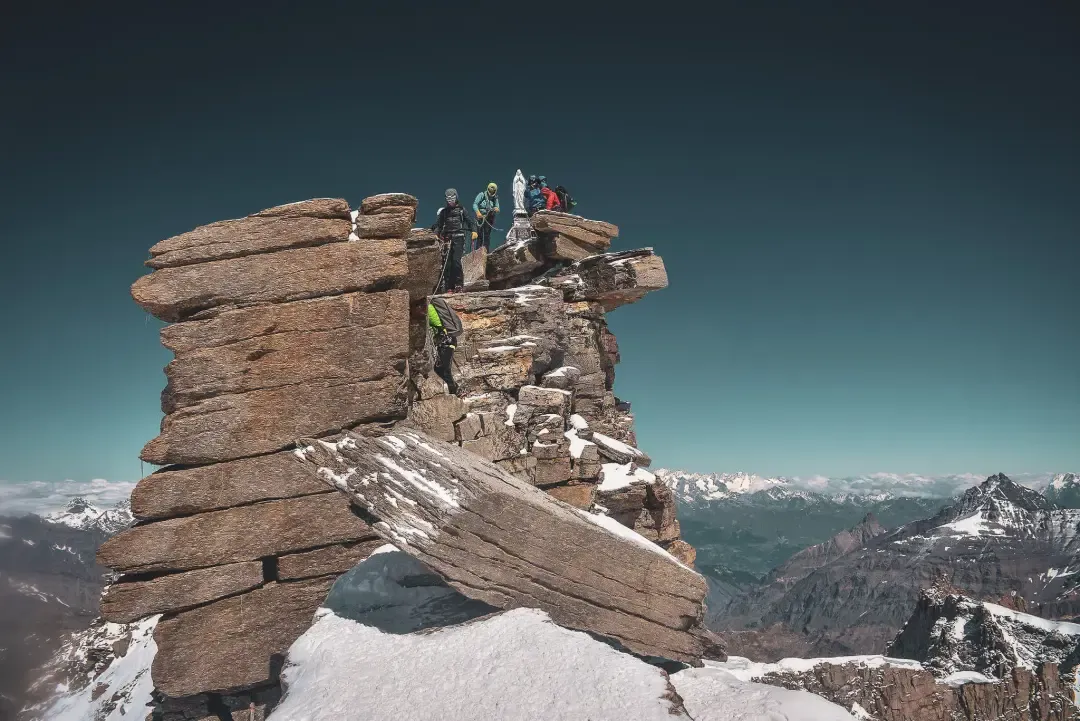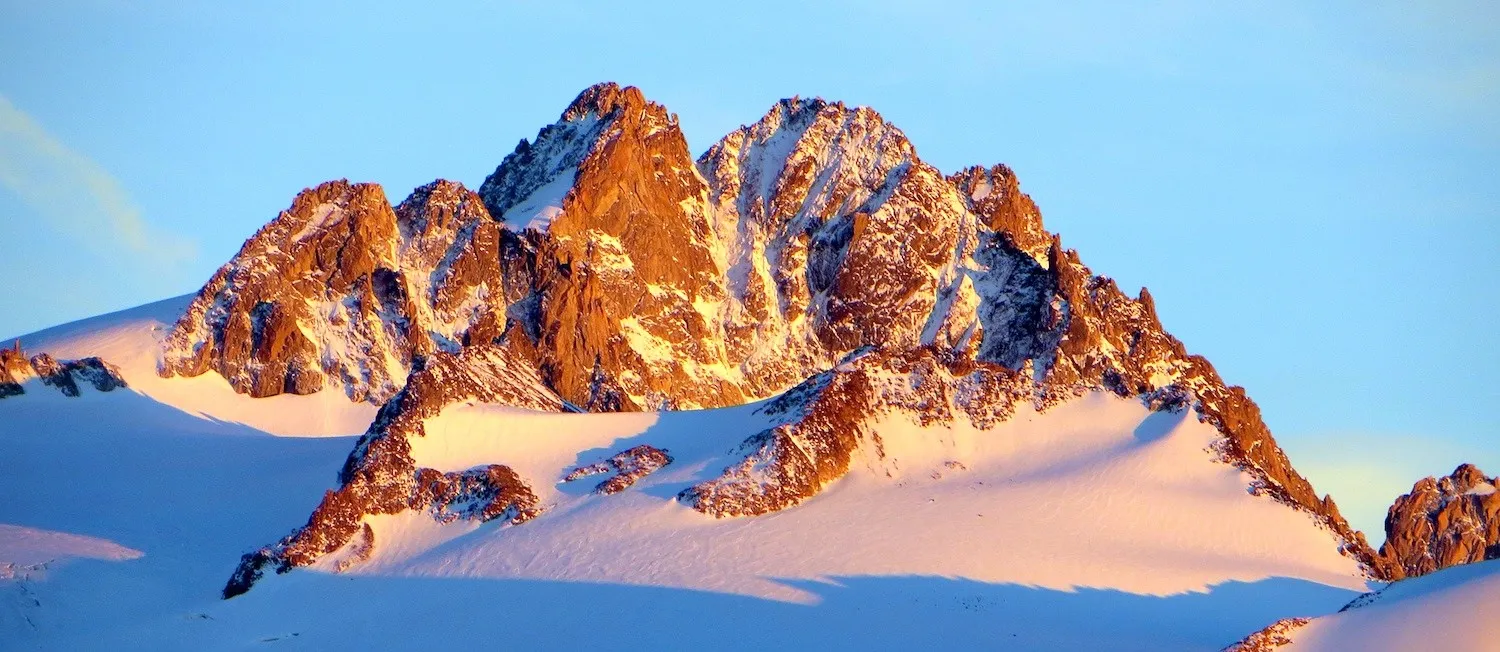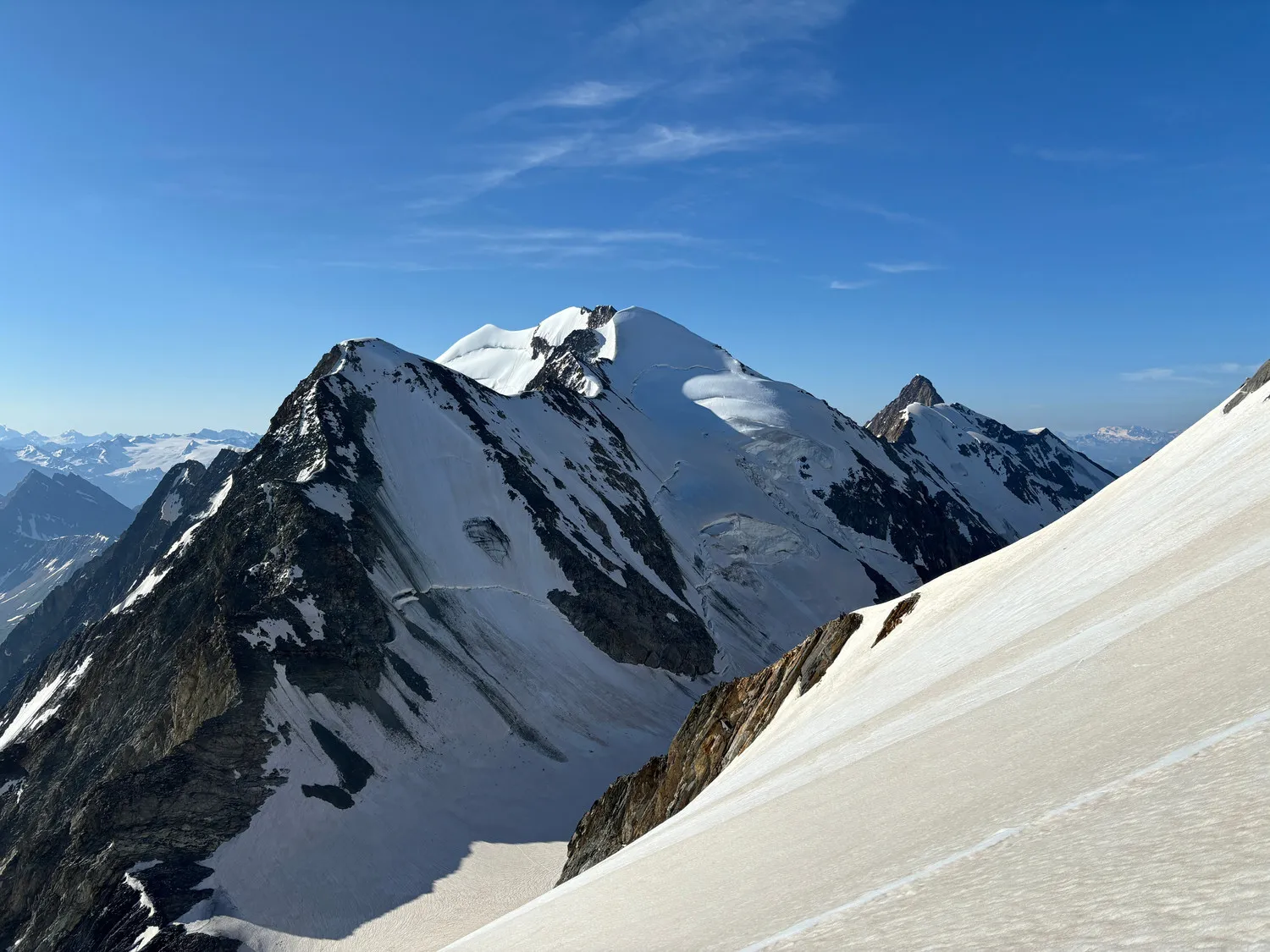4 easy summits for beginner mountaineers
4 easy summits for beginners - Mountaineering courses with DiscoveRent in Maurienne all levels in small groups

Why start mountaineering?
Mountaineering is the art of climbing peaks by combining hiking, climbing and glacier travel. But before embarking on legendary climbs, it's best to start with routes suitable for beginners.
Would you like to start mountaineering without putting yourself at risk and enjoy an unforgettable first experience? Here are 4 accessible summits where you can learn the basics in complete safety, with or without a guide.
1. Traversée des Dômes de Miage (3,673 m) - Mont-Blanc
Why is this an ideal summit for beginners?
- A progressive itinerary: a hiked approach, followed by a glacier walk and an easy ridge
- An exceptional panorama of Mont Blanc and Val Montjoie
- A real introduction to mountaineering, with a night in a refuge and a dawn departure
Itinerary
Day 1: ascent to the Conscrits hut (2,600 m) - After a beautiful hike starting from Les Contamines, you spend your first night at altitude.
Day 2: ascent of the Dômes de Miage - Depart at dawn to reach the Tré-la-Tête glacier, reach the Col des Dômes and follow the aerial ridge to the summit of the Bérangère.
Difficulty
Technically easy, but requires good physical condition.
Perfect for a first ridge run.
💡 Recommended accompaniment: If this is your first outing in the high mountains, setting off with a mountaineering guide is an excellent idea.
2. Bishorn (4,153 m) - Valais Alps
Why choose the Bishorn to start mountaineering?
- A 4,000m summit that's accessible for a first experience at high altitude
- A classic glacier ascent, ideal for learning how to use crampons and ice axe
- Magnificent views of the Weisshorn and the Zinal valley

Itinerary
Day 1: Ascent to the Tracuit refuge (3,256 m) - A demanding but magnificent hike, with breathtaking views of Zinal and the glacier.
Day 2: Ascent of the Bishorn - We set off at night to ascend the Bishorn glacier, then climb a short steep slope (5-6 metres) before reaching the summit.
Difficulty
No climbing, just glacier walkingSome slightly steeper sections at the end, but accessible to beginners
💡 What to bring: Good acclimatisation to the altitude and a good mental attitude to the effort.
3. Gran Paradiso (4,061 m) - Italian Alps
Why is it a must for first-time mountaineers?
- The perfect 4,000 m for your first experience of the high mountains
- A glacier route with few technical difficulties, accessible to beginners
- An immersion in the heart of nature in the Gran Paradiso National Park, with its ibexes and marmots

Itinerary
Day 1: Ascent to the Victor Emmanuel II refuge (2,735 m) - An easy hike from Pont (Val d'Aoste), with an overnight stay in a refuge.
Day 2: Ascent of Grand Paradis - Progress on glacier to the summit, with a short easy climb (passage in III) on the last few metres before the summit cross.
Difficulty level
Ideal for a first 4,000m climb, but requires a good level of fitness.
Short final climb, but not very strenuous.
Would you like to climb Grand Paradis with a mountain guide? Discover our expedition to climb Grand Paradis.
A unique and extraordinary adventure with Wildhartt, Europe's largest outdoor guide community. Discover it here 👉 Climb my first 4000m
💡 Bonus: The wild environment and Italian setting add a unique touch to this climb.
4. Aiguille du Tour (3,542 m) - Mont-Blanc Massif
Why is the Aiguille du Tour the perfect place to start mountaineering?
- A varied climb: glacier trekking + short climb
- A mythical, accessible summit, perfect for a first independent climb
- A flexible option: you can follow it up with Tête Blanche (3,420 m)

Itinerary
Day 1: Ascent to the Albert 1er refuge (2,702 m) - Departure from the village of Le Tour, with an overnight stay in the refuge.
Day 2: Ascent of the Aiguille du Tour - Glacier walk, followed by a short section of easy climbing before reaching the summit.
Difficulty
Accessible glacier walk, ideal for learning to crampon.
A fun final climbing section, with no major difficulties.
How do you get off to a good start in mountaineering?
Our advicew
- Never underestimate the mountain
- Mountaineering is a high-risk sport, so you need to be well prepared.
- Learn the basics (cramponing, roping up, reading the terrain) with a guide.
- Choose the right equipment: suitable mountaineering boots (rigid, cramponable), harness, helmet, ice axe, crampons, thermal clothing, etc.
- Training beforehand
- Test climbing and via ferrata to improve your ability on rocky terrain
- Go hiking with a difference in altitude to get your body used to the effort involved
If you want to know more, we’ve written a full article on the topic. Click here.
Go with a guide for your first race
A professional will teach you the right techniques and ensure your safety. Want to learn mountaineering with us?
With Wildhartt, we offer you 4 levels of learning to learn and progress in the high mountains with outstanding UIAGM mountain guides. And all this in the Alps, during an immersive course with a small group of 3 to 4 participants maximum.
Ready to take your first steps in the high mountains? Find out more about our courses here.
Want to go off without a guide?
Check out our topo and itineraries:
These adventures might interest you ...

Mount Rose's 4000-metre peaks

Introduction to rock climbing in Belgium

Mont Blanc mountain climb: A 5-Day guided ascent to the summit

Discover Mountain Climbing in the Chamonix Valley

Gran Paradiso: climb your first 4,000-meter peak

